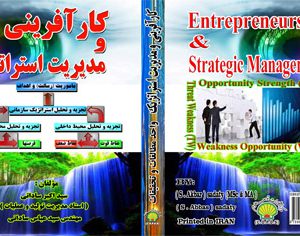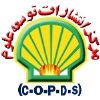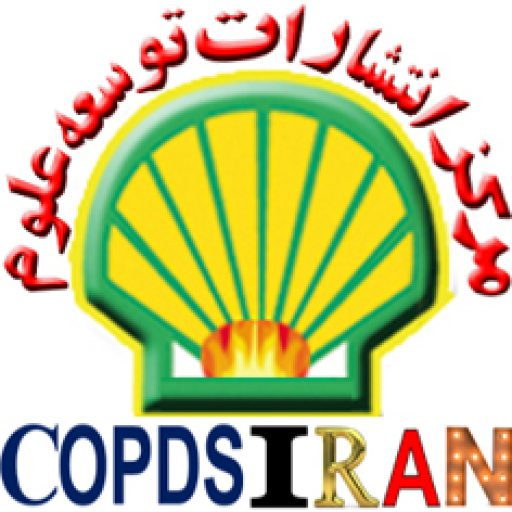Institutional Review Board (IRB)- copdsitan
توضیحات
هیئت بررسی نهادی (IRB) – copdsitan
هیئت بررسی نهادی (IRB)، یک کمیته فنی و اداری است که برای نظارت اخلاقی و نظارتی بر تحقیقاتی که شامل افراد انسانی است تعیین شده است. IRB برای محافظت از حقوق، ایمنی و رفاه افراد انسانی درگیر در پروژه های تحقیقاتی، مطابق با اصول اخلاقی و مقررات بین المللی، منطقه ای و محلی وجود دارد. برای تحقیقات موضوع انسانی که در سطح بین المللی انجام می شود، مقررات محلی اضافی و استانداردهای بین المللی اعمال می شود و توسط کمیته های اخلاقی در کشورهای مربوطه نظارت می شود.
عنوان دستنوشته جهانی:
Exploring the vicious cycle of climatic challenges associated with the soil system on 5 continents worldwide due to the low cognitive of consuming historical products from agricultural revolutions
continents worldwide due to the low cognitive of consuming historical products from agricultural revolutions
Summary
Background and Objectives
The processes of urban and rural population increase, and the impact of household competition on providing basic needs has caused the consumption of various resources to grow rapidly and unevenly on the 5 continents of the world. In such a competitive environment, the world’s agricultural soil systems, by receiving the products of agricultural revolutions, have made the climate out of the global order. Therefore, the purpose of this strategic research is to discover the missing links in the poor understanding of decision-making managers and in the biochemical and physicochemical history of the soil in relation to the products of agricultural revolutions.
Results
The information data from the materials and methods section of this strategic research (parametric and non-parametric), which was managed with the help of predetermined components, has reflected two very important vital factors to the researchers of the worldwide. The historical trend resulting from the conventional mode of use of the world’s agricultural soil system, which has been exhaustively investigated with the “SMM” model, has led to two very important effectiveness components (CPEP=47.8% and CPAR=54.2%), globally. The result of such an operation, which was achieved with the lack of awareness of the executors in the 5 continents of the world, showed that 58.5% of the climate changes were agricultural soils.
Conclusion and suggestions
The results of this strategic multidisciplinary study, which involved the identification of driving factors (strengths and opportunities) and inhibiting factors (weaknesses and threats) worldwide, showed that climate change is dependent on anthropogenesis. At the end of this exhausting effort, 10 strategic suggestions along with the pragmatism paradigm were communicated to the world.
Keywords: Soil biodiversity alarms; Low cognition of the process; Consumption of products of agricultural revolutions; Synergy and conflict; Anthropogenic climate change; Climate system thirst.
Definition of low cognitive status
Low cognitive activity is a process that happens in all people of the world (ordinary people, students, engineers, doctors, professors and others) and is not a full awareness of the future of their decisions and actions. This culture (low cognitive) is mostly found in the field of agricultural revolutions and products of leading countries (new ideas, heavy tillage machines, fertilizers and agricultural pesticides) and consumers of 5 important continents of the world (farmers and other consumers of agricultural products). (LC) and/or (LA) are the main causes of climate change problems and the development of negative components of agricultural soils worldwide. By definition, low awareness and human tendencies occur after low cognitive activity.
Availability of data and materials
This strategic research consists of two statistical information structures due to the large amount of pre-managed data. 1- Parametric statistical information 2- Non-parametric statistical information. These two statistical data form the basis of our strategic research materials and methods. In the following, some environmental strategic information “four points of intra- and extra-organizational structures of the systems of 5 continents” is impractical due to maintaining the spiritual value of human and national resources and also, the large amount of data in this research. In this context, access to some resources is available in the following links:
https://ldas.gsfc.nasa.gov/gldas/soils and https://www.fao.org/faostat/en/#data/RT
https://www.ncei.noaa.gov/node/6696 and www.copdsiran.org and www.copdsiran.ir
Tab. 2. The conventional state of science production is achieved through the acceptance of joint articles by professors and PhD students at world universities in prestigious international journals.
| Traditional Conditions
Component type |
Conventional Trend Stats | Number of review articles | Number of research articles | Number of references | Process effectiveness percentage |
| Corresponding author (Supervising professor) | 510 | 411 | 99 | 5210 | 31.5 |
| Corresponding author (PhD student) | 151 | 45 | 106 | 111 | 44.5 |
| Corresponding author (All) | 69 | 33 | 36 | 421 | 24 |
| Sum | 730 | 489 | 241 | 5742 | 100 |
| (AEERAS) | – | – | – | – | 33.3 |
Note: One of the reasons for evaluating the effectiveness of processes in the field of agricultural soils and climate is to show the status of research conducted by professors and doctoral students worldwide. In this research field, the internal and external components of the global target society were managed with the strategy of the model (SMM). Formulas 1, 2, 3, 4, 5, and 6 were used to set the goals and determine the effectiveness of the process. In our strategic research for the desired result, the following 4 main components are involved in the soil realm:
- Components of the global strength of agricultural soils.
- Components of global weakness of agricultural soils.
- Components of the global opportunity for agricultural soils.
- Components of the global threat of agricultural soils.
IFE(S) = ∑_(i=1 )^21▒(S1×R1) +(S2×R2)….(Sn×Rn)= +4.02 Main objective (SA) (1)
IFE(W) = ∑_(i=1)^19▒〖 (W1×R1) 〗-(W2×R2)….(Wn×Rn)=-1.31 Main Objective (SD) (2)
EFE(O) = ∑_(i=1)^22▒〖 (O1×R1)+(O2×R2) 〗….(On×Rn)= +3.6 Main objective (SA) (3)
EFE(T) = ∑_(i=1)^23▒(T1××R1) -(T2×R2)…(Tn×Rn)= -1.01 Main objective (SD) (4)
S + (-W) > 0 = 4.02 + (-1.31) = (+ 2.71) and O + (-T) > 0 = +3.4 + (-1.01) = (+ 2.39) (5)
C. I = IFE (S) – IFE (W) P. E =(C.I)/(S n) ×100 =% Process effectivness (6)
In this global perspective of research, two very important and critical factors, in alignment with our vision goals “CPAR and CPEP”, which will have Deep impacts on global climate change, have been achieved as follows:
Percent of effectiveness (CPAR)=(S.E)/(S.S)× 100 =% E % E=2.71/5×100 =%54.2
Percent of effectiveness (CPEP)=(S.E)/(S.S)× 100 =% E % E=2.39/5×100 =%47.8
Tab. 4. The results of the field statistical data (parametric and nonparametric) showed the main components of the research objective (10 components) with two processes (SPSS) and (strategic operations thinking). The Pearson correlation coefficient was calculated as %1.
MR
MC PCC, (r) (CIDM)
Score limit of 4 (PLUCC) %
1- MLUC .982** 4 12.8
2- TT .901** 3.5 7.4
3 – UCF .890** 3.3 6.1
4 – APU .858** 3.3 5.0
5 – SE .853** 3.1 5.0
6 – SRCR .850** 3.0 4.8
7 – UAHW .849** 2.7 4.8
8 – SP .839** 2.7 4.2
9 – CIM .590* 2.0 4.2
10 – TSLO .509* 1.6 4.2
Sum – – 58.5
Availability of data and materials
Statistical data and data analysis are approved by institutional review board (copdsiran).
محصولات مشابه
-

برنامه درسی معنوی
7,000 تومان افزودن به سبد خرید -




کارآفرینی و مدیریت استراتژیک Entrepreneurship and Strategic Management (Strategic Perspective)
@ علوم اجتماعی و روانشناسی, @ آموزش و پرورش, @ پزشکی و سلامت, @ دینی و تمدنی, @ علوم حسابداری, @ کشاورزی و منابع طبیعی, @ مدیریت و اقتصاد30,000 تومان افزودن به سبد خرید -




کتاب هم افزایی (مدیریت همت و کار مضاعف)
1,800 تومان افزودن به سبد خرید -




هم افزایی (جهاد اقتصادی)
3,000 تومان افزودن به سبد خرید



دیدگاهها
هیچ دیدگاهی برای این محصول نوشته نشده است.